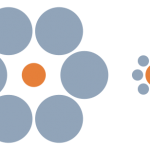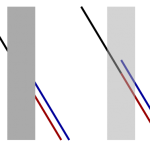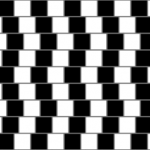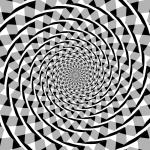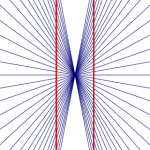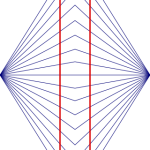Estimation
20 April 2012 0 Comments
Presented below are three sport utility vehicles parked in a row. Which one is the biggest? Would you believe that all three of these are identical and exactly the same size? Perhaps you’ll want to measure them with something to find out for yourself. Remember, new illusions are posted daily Monday through Friday. If you […]
Estimation
25 March 2012 0 Comments
Which orange circle in the image below is bigger? Believe it or not, both orange circles are the same size. The larger circles surrounding the one on the left give it the appearance than it is smaller than the one on the right (surrounded by smaller circles). This illusion is known as the Ebbinghaus illusion […]
Estimation
24 March 2012 0 Comments
Looking at the figure on the left, does the blue or red line appear to intersect with the black line to the left? While it doesn’t look like it, the red line is actually aligned with the black line as shown on the figure to the right. This illusion is known as the Poggendorff Illusion […]
Estimation
23 March 2012 0 Comments
Are the horizontal lines on the following figure parallel or do they seem to be skewed? They are indeed parallel but appear to run at angles because of the staggered black and white boxes. This illusion is commonly known as the cafe wall illusion.
Estimation
22 March 2012 0 Comments
Do you see a spiral in the image below? There is no spiral. This drawing consists of a series of concentric circles. This illusion, called the Fraser spiral was discovered by British psychologist James Fraser in the early 20th century.
Estimation
20 March 2012 0 Comments
Do the red lines below appear to bow outward? Or are they parallel? The red lines are straight and parallel and do not bow outward despite their appearance. This illusion, known as the Hering illusion, was discovered in 1861 by a German physiologist named Ewald Hering. The Hering illusion produces the opposite effect of the […]
Estimation
19 March 2012 0 Comments
Do the red bars appear perfectly straight and parallel? The lines are straight and parallel. Some viewers will perceive the lines to bow inwards due to the angles of the blue lines. This illusion was first observed by German psychologist Wilhelm Wundt during the 19th century. The Wundt illusion produces the opposite effect of the […]


